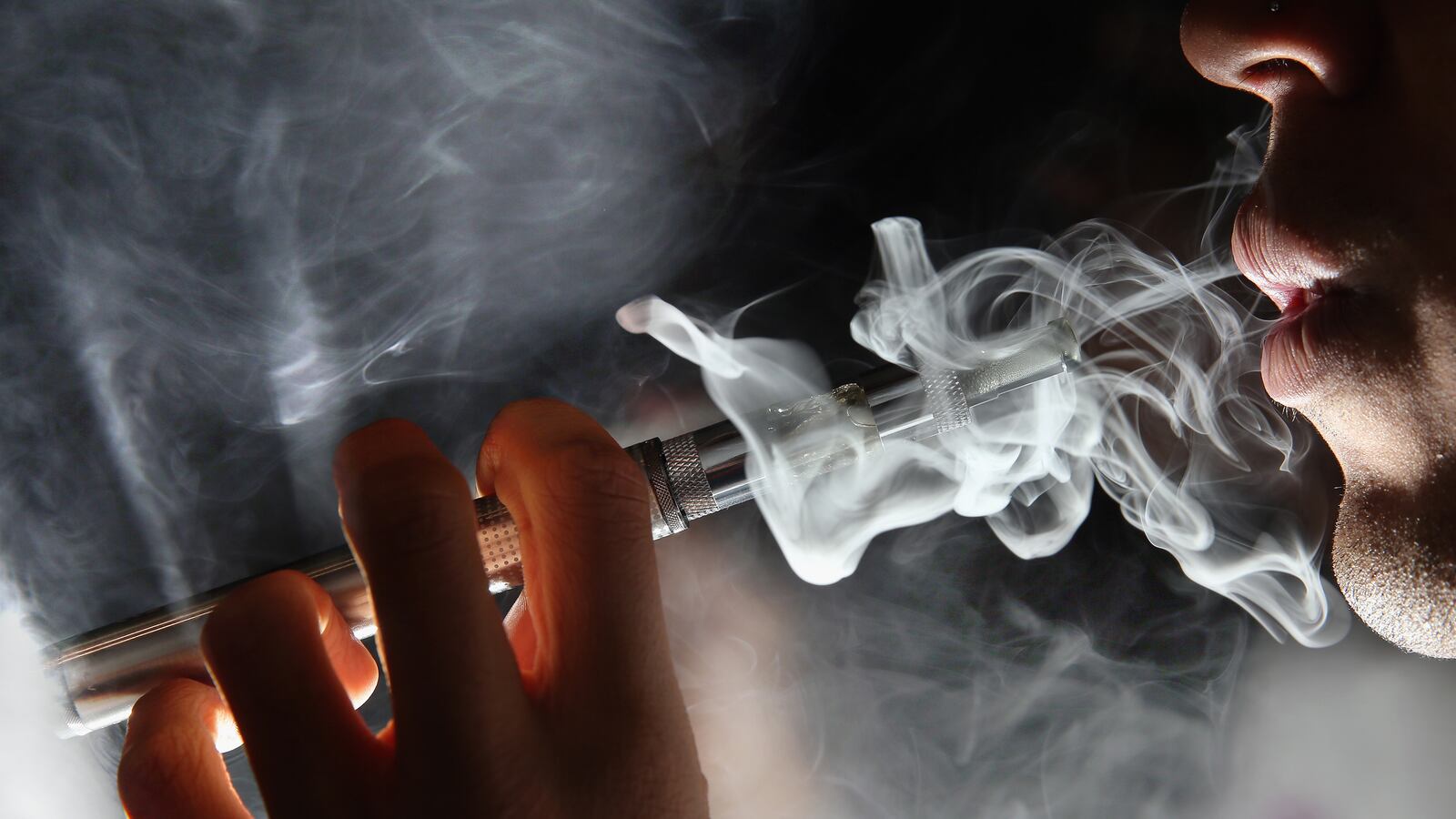Callie Thompson has worked in trauma centers for years. In that time, she’s seen at least one injury become increasingly common: exploding e-cigarettes, which can painful injuries like third-degree burns, tooth loss, and tissue damage.
“All of these people were using these e-cigarette devices because they thought they were safer,” Thompson, an assistant professor of surgery at Vanderbilt University’s Division of Trauma and Surgical Critical Care, told The Daily Beast. “That to me is what really sticks out: These were marketed as a very healthy, low-risk way to stop smoking. And without the regulation on the devices, they’re not necessarily safer.”
Thompson’s patients are not alone. Last month, William Brown, a 24-year-old North Texas licensed electrician, took a hit of his vape pen on his way to the bank. But the pen exploded in his face; shrapnel fatally severed his left internal carotid artery and left his grandmother’s car doused in blood and burned plastic.
A 2017 report from FEMA’s U.S. Fire Administration estimates that between 2009 and 2016, there were 195 e-cigarette explosion-related injuries and fires, resulting in 38 “severe” injuries. The numbers have spiked in recent years, jumping from 15 incidents in 2014 to 98 in 2016.
The true number could be far higher; incidences could be unreported or not properly classified.
The explosions are the result of malfunctioning lithium-ion batteries, according to the report. Lithium-ion batteries tanked Samsung’s Gallery Note 7—but they’re especially dangerous in e-cigarettes, the report notes, because the structure of the vape pens make them more likely than other products to behave like “flaming rockets” if the batteries go bad.
That’s especially likely, the report adds, if a user is vaping with a “mechanical mod,” an e-cigarette that lacks circuitry or protection for the battery. Both Brown and Tallmadge D'Elia, a 38-year-old Florida man who was reportedly the first person to die from an exploding e-cigarette last year, were reportedly using mods.
Thompson said that when these batteries explode, patients can suffer three different injuries: flame burns, chemical burns, and blast injuries.
Flame burns, the most common injury, usually occur when the device or a replacement battery explodes in a user’s pocket and catches their pants on fire.
“That will result in higher temperatures being close to the skin for longer,” Thompson, who said she’s attended to about 30 e-cigarette explosion cases, explained. “And that’s how you get deeper burns.”
Those burns are usually third-degree burns, the most severe type, which can damage tissues and nerves to the point of a person losing their sense of pain. Treating them requires skin to be scraped from other parts of the body and grafted on to the injury site, a process which Thompson describes as “very painful.”
Some patients also suffer chemical burns from the liquid inside the e-cigarette. These burns are usually second-degree—less severe, but much more painful.
If a patient is smoking or holding the e-cigarette when it explodes, they can also suffer blast injuries, like Brown’s severed artery. That can include broken teeth, face fractures, even avulsions, Thompson said—an injury characterized by large pieces of skin being ripped away.
Although D’Elia is the only other death documented in news reports, grisly injuries—including a New York man who was left with a hole in his tongue and a 14-year-old who was blinded in one eye after his e-cig exploded at a Brooklyn mall—are not uncommon. In 2016, Thompson and her Seattle colleagues published a letter in the New England Journal of Medicine detailing the 15 cases they’d seen in their hospital, featuring grotesque images of hands and faces blackened by e-cigarette explosions.
Despite the increasing incidences of exploding vapes, there are no product safety standards in place, the Verge reported Tuesday. The administration is reportedly working on implementing standards—but currently, it doesn’t require safety testing for devices that were on the market before August 2016.
A spokesperson for the FDA told The Daily Beast via email that the administration “shares concerns about adverse events associated with the use of e-cigarettes, including overheating and exploding batteries,” and has taken “several steps” to keep consumers safe, citing draft guidance for regulating batteries, public workshops, and safety tips for users as examples of the FDA’s efforts. The spokesperson said the administration has been working on safety standards since July 2017.
Despite the lack of regulation, multiple prominent e-cigarette brands told The Daily Beast that they have taken precautions to keep consumers safe.
“JUUL Labs takes product safety incredibly seriously, which is why each device is inspected multiple times before it leaves our manufacturing facilities,” a JUUL spokesperson told The Daily Beast via email. “Our devices are specifically designed with multiple protections, while charging and in use, and have undergone rigorous testing in a wide variety of scenarios.”
Vuse, a company owned by tobacco titan R.J. Reynolds that issued a voluntary recall of 2.6 million vape pen units in April 2018, told The Daily Beast via email that they had since improved “process,” “quality controls,” and “the charger accessory,” and that the company “take[s] pride in providing our consumers with tobacco and vapor products of the highest quality.”
A representative from the nonprofit advocacy group American Vaping Association emphasized that these events are extremely rare—and that many of the e-cigarettes that have exploded have been mods.
“Users of devices like JUUL or virtually any product with an internal battery have nothing to fear from this story,” AVA President Gregory Conley told The Daily Beast via email. “However, for those consumers wishing to use more advanced products that require batteries to be removed for recharging, learning and practicing battery safety is a must.”
But the authors of the NEJM report disagree. “Although these explosions were previously thought to be isolated events,” the authors wrote, “the injuries among our 15 patients add to growing evidence that e-cigarettes are a public safety concern.”







